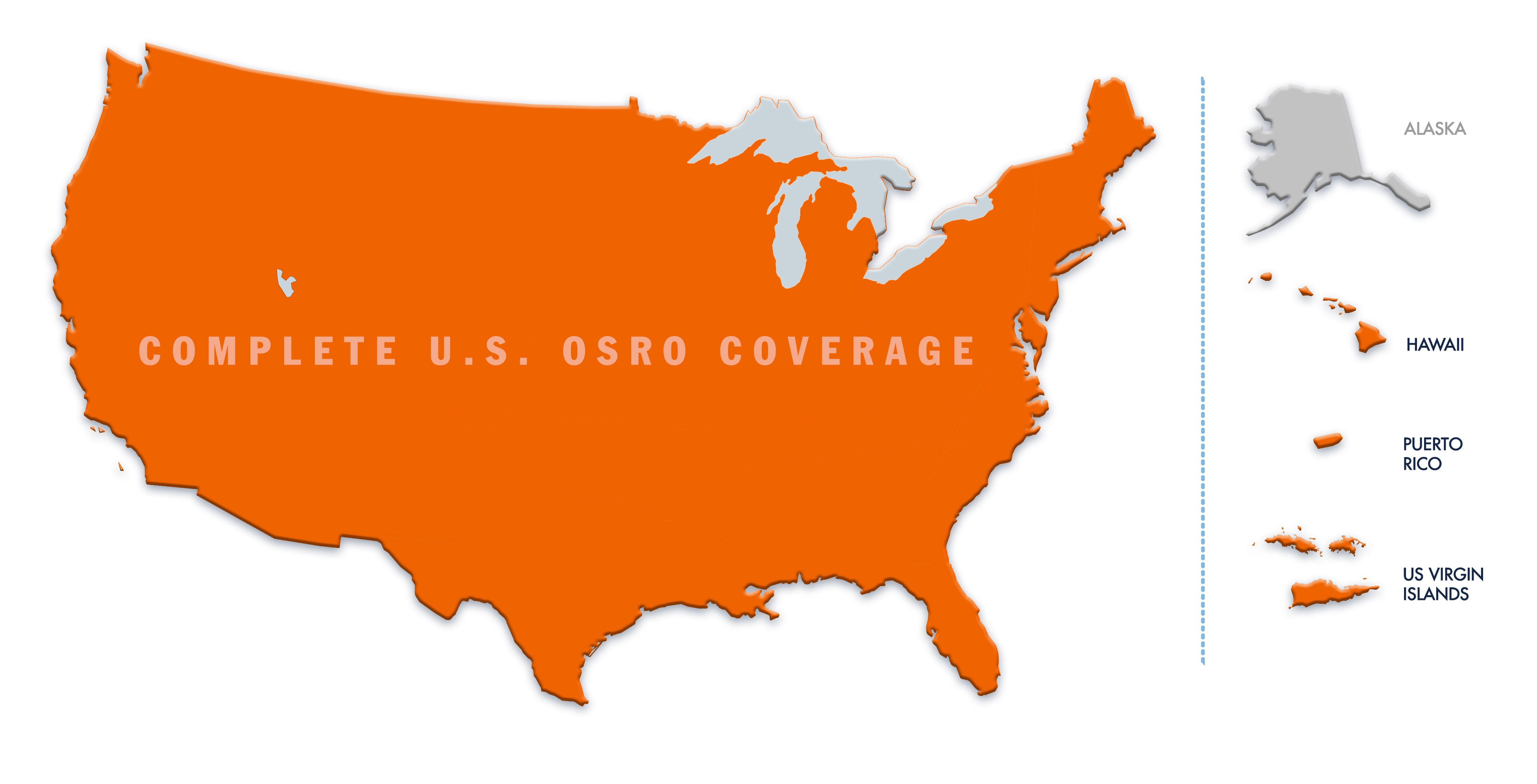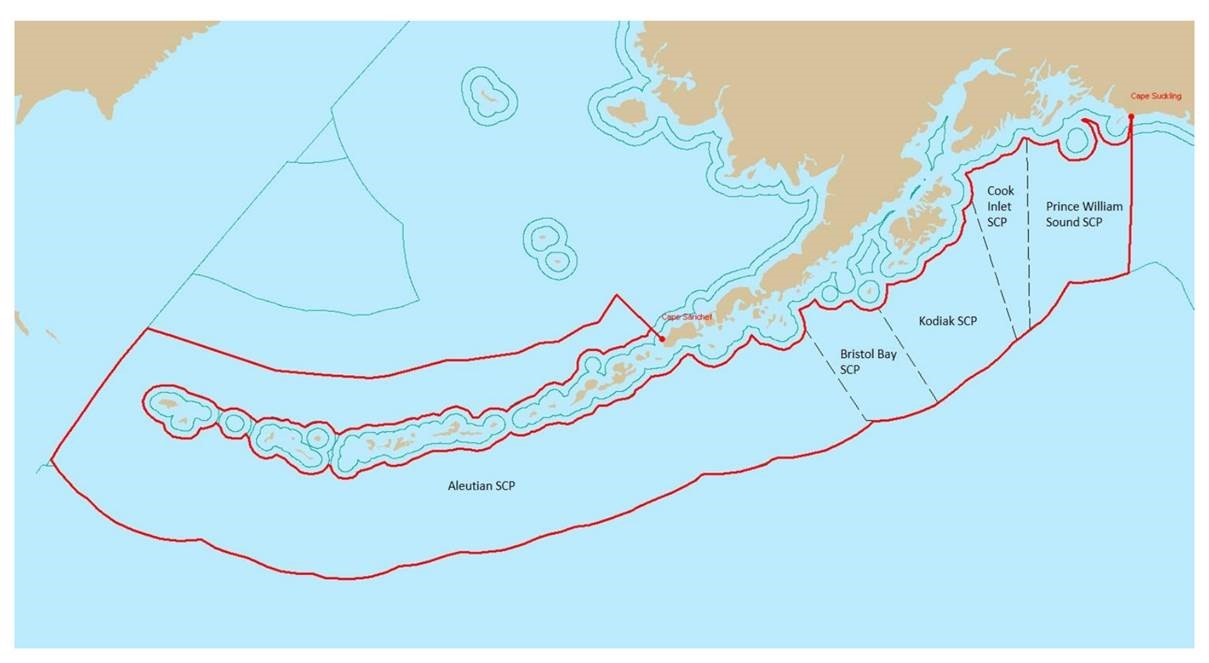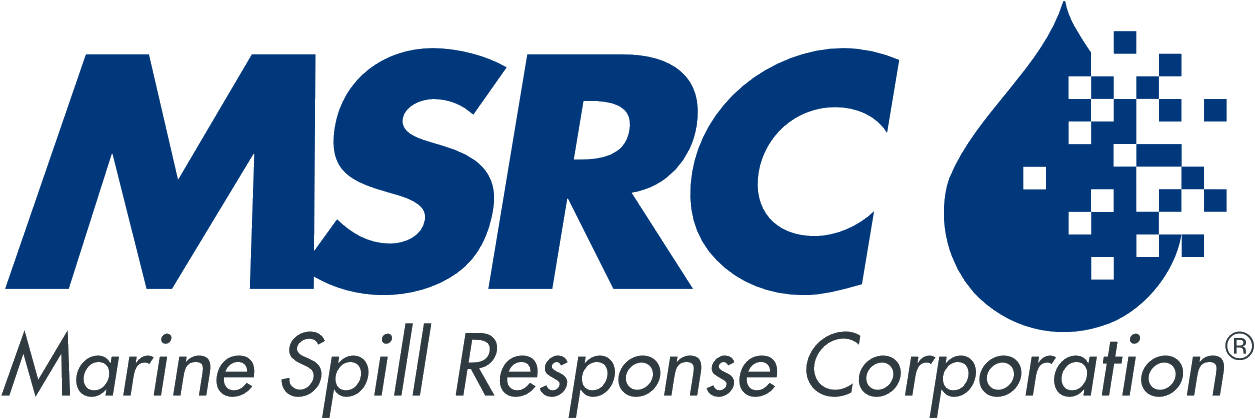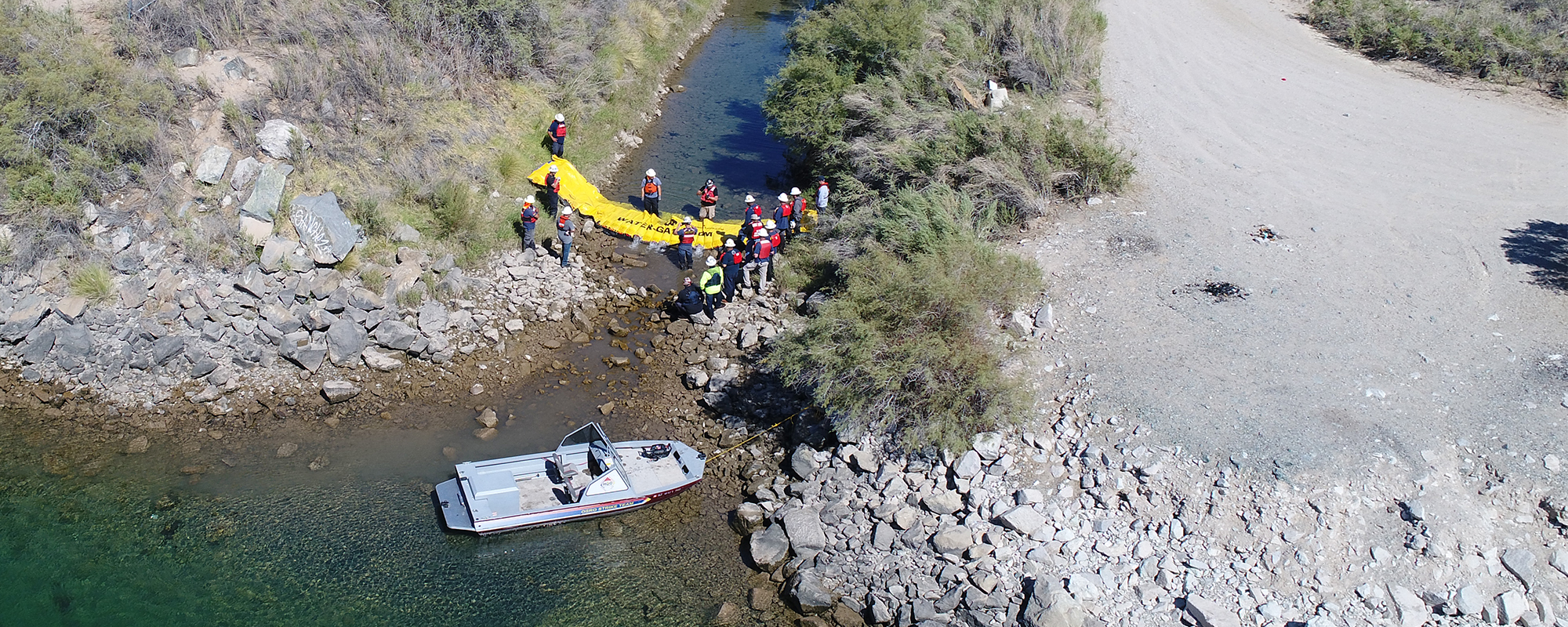MSRC provides complete U.S. Coast Guard OSRO coverage in the United States to fulfill a variety of discharge scenarios for all COTP zones, with exceptions in Alaska, Guam, Saipan and American Samoa. Outside of the continental United States, MSRC coverage areas also include Hawaii, Puerto Rico, U.S. Virgin Islands (St. Croix) and the Great Lakes.
MSRC’s coastal OSRO capability is primarily dedicated on the West and Gulf Coasts, while the vetted STARs contractor network supplements OSRO coverage on the East Coast and U.S. Interior. With the combination of MSRC's own dedicated response capability and contracted resources, our force of responders and equipment can be dispatched from over 90 sites nationwide at a moment's notice, 24 hours a day, 7 days a week, 365 days a year.

MSRC provides complete USCG OSRO coverage throughout the East Coast through our own dedicated assets, supplemented with our STARs contractor network. There are no state OSRO requirements that exceed the threshold of the Federal OSRO requirements of the USCG on the East Coast. A local OSRO within close proximity of your facility or internal capabilities will be required to meet 1- to 2-hour average most probable discharge (AMPD) deployment timeline requirements. MSRC can help your organization develop a fit-for-purpose, reliable AMPD strategy.
With regard to tank vessel operations, MSRC can meet AMPD requirements for STS transfers on a case-by-case basis. Common lightering areas on the East Coast where additional AMPD fees apply include:
- Gravesend Bay / Stapleton Bay: $620
- Big Stone / Cape Henlopen: $1,614
- Marcus Hook: $2,300 on average, time and material billing
MSRC provides complete USCG OSRO coverage throughout the West Coast of the U.S. through our own dedicated assets for the highest worst-case discharges, in the highest volume ports in the U.S. All three states on the West Coast –Washington, Oregon and California—have state OSRO requirements that exceed the Federal USCG requirement thresholds. A local OSRO within close proximity of your facility or internal capabilities will be required to meet 1- to 2-hour average most probable discharge (AMPD) deployment timeline requirements.
MSRC provides AMPD coverage for STS transfers in LA/LB harbor and at the Pacific Area Lightering or PAL at no additional cost from our steady state pre-positioned assets.
Washington
Washington state has unique regulations that require a local spill management team that exercises a local contingency plan annually. MSRC is an approved Primary Response Contractor (PRC) by the Washington State Department of Ecology. MSRC customers may cite MSRC resources, including aerial surveillance and remote sensing, VOO, in situ burn, dispersants, mobile wildlife care capability and all other regulatory requirements to help meet Washington State Contingency Planning requirements.
MSRC partners with Washington State Maritime Cooperative (WSMC) to meet Washington State Contingency Plan requirements for tank and non-tank vessels entering Puget Sound and Grays Harbor. Please visit the WSMC website for more information on how to sign up with WSMC.
Oregon
Oregon has unique regulations that require a local spill management team that exercises a local contingency plan annually for the Columbia and Willamette rivers. MSRC partners with MFSA/Clean Rivers Cooperative to meet the umbrella plan requirements for the contingency plan annually. MSRC is an approved Primary Response Contractor (PRC) by the Department of Environmental Quality. MSRC customers may cite MSRC resources, including aerial surveillance and remote sensing, VOO, in situ burn, dispersants, mobile wildlife care capability and all other regulatory requirements to help meet Oregon State Contingency Planning requirements.
California
MSRC is certified by the California Department of Fish and Game, Office of Spill Prevention and Response (OSPR) as an Oil Spill Response Organization (OSRO). Within the coastal zones of California MSRC customers may cite MSRC in their vessel and facility response plans. For citation of MSRC inland of the California coast, please refer to MSRC’s OSRO rating issued by OSPR or contact MSRC directly to verify plan citation capability. MSRC works with OSPR to gain certification for inland response where our Customers operations require it.
In 2018, MSRC took over the operations of Clean Islands Council (CIC) and moved additional spill response equipment to Hawaii to provide the most expansive OSRO coverage across the island chain with dedicated equipment. MSRC not only provides coverage in and around Oahu, but also on the outer islands with dispersant helo buckets, skimming equipment and OSRVs.
For vessel transit or call port in Hawaii, MSRC does not charge voyage fees for tank or non-tank vessels. MSRC charges an AMPD Transfer fee for vessel transfers at the IES mooring in Barbers Point of $3,000, including split loads. The Par Pacific mooring also carries a Transfer fee, however that is not charged by MSRC but by the facility itself. Tankers are not charged any fees by MSRC unless they call the IES mooring in Barbers Point: port calls for resupply or transits are free for MSRC customers.
MSRC provides complete USCG OSRO coverage throughout the Gulf region of the U.S. through our own dedicated assets for the highest worst-case discharges in the highest volume ports in the U.S. There are no state OSRO requirements that exceed the threshold of the Federal OSRO requirements of the USCG in the U.S. Gulf. A local OSRO within close proximity of your facility or internal capabilities will be required to meet 1- to 2-hour OSRO timeline requirements.
MSRC can meet AMPD requirements for STS transfers in approved USCG lightering zones, unless we have a Responder vessel out of service or temporary relocated. We will issue announcements to our customers anytime there is a vessel out of service, or an equipment move that impacts our ability to cover lightering operations or AMPDs so that alternative cost-effective arrangements can be made.
If you are planning to lighter outside of an approved USCG zone that is closer to shore, please notify MSRC at ampd@msrc.org. We will likely need to move equipment at additional cost to provide AMPD coverage for lightering operations closer to the shoreline than the approved USCG zones.
Through our vetted STARs contractor network, MSRC has USCG OSRO Classification for all Inland Captain of the Port zones. MSRC’s Interior OSRO coverage satisfies EPA and PHMSA worst case discharge scenario requirements for all inland locations within 12-hour response planning timelines.
We are OSRO Classified for Tier 1-3 Dispersant Coverage in Prince William Sound and Cook Inlet in Alaska. Following the issuance of USCG OSRO Guidelines in August 2019 stipulating that aerial dispersant application must begin within 7 hours of activation, MSRC repositioned our 737 aircraft and tightened our aircraft response times to continue to offer complete U.S. OSRO coverage to our customers. All MSRC Customers have access to MSRC dispersant capability in Alaska regardless of which Tier 1 OSRO they cite in their plans.

While MSRC cannot be directly cited for VRPs, NTVRPs or facility plans for OSRO coverage in Alaska, MSRC supports its customers in Alaska with Tier 2 and Tier 3 scalable response. This means for large events or events that require specialized equipment like dispersant, ocean boom, skimming equipment, advanced surveillance or communications packages, MSRC can send equipment from the U.S. mainland within 12-24-36 hour arrival times to augment the Tier 1 response carried out by a local Alaska OSRO.
MSRC will provide additional capability to its customers enrolled with all local providers that hold a valid APC from the USCG including:
- CISPRI
- One Call Alaska
- Alaska Chadux Network
- SeaPro
- SERVS
For vessel operators, Guam, Saipan, Samoa and the Mariana Islands all require APC holders to meet USCG VRP and NTVRP requirements. The APCs are typically administered by a Spill Management Team or QI such as Gallagher Marine, O’Brien’s, Hudson, etc. While MSRC cannot be cited alone to meet OSRO requirements to call the outer pacific islands, your SMT or QI will cite a combination of local response resources and MSRC equipment as the underlying response capability for the APCs that they secure to meet these requirements on behalf of their customers. Please contact your QI / SMT for more information about how to comply with requirements for these islands.
While MSRC can provide response support to our customers in Mexico, Canada and other places abroad, MSRC cannot be cited for regulatory compliance outside of the U.S. Please see the International Response Support section for more information.

